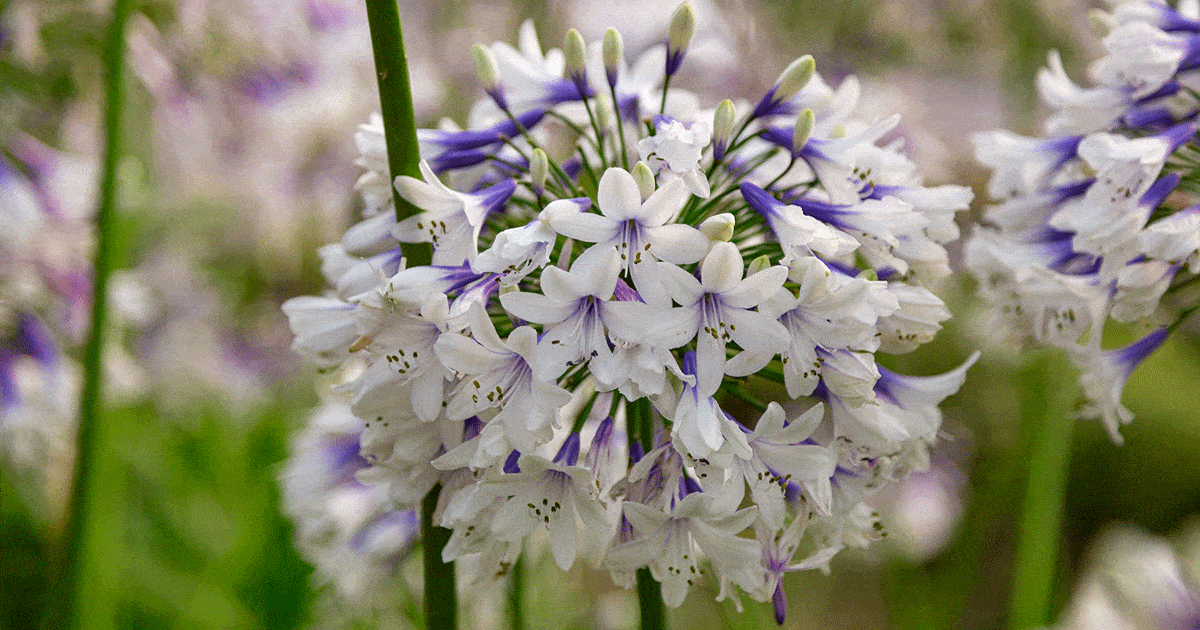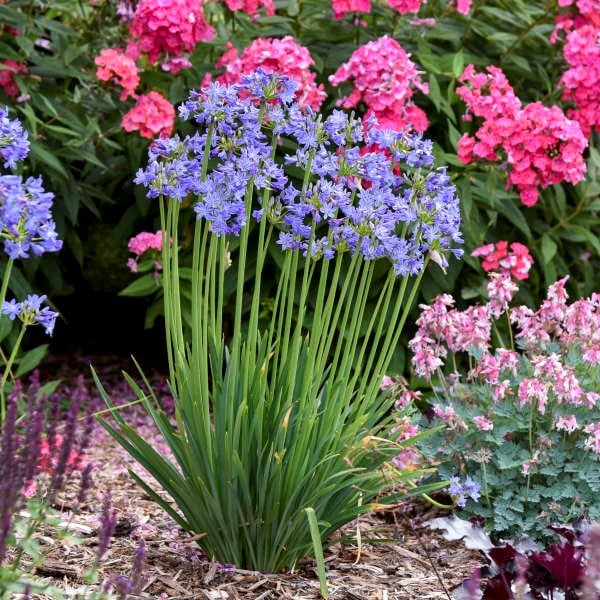Unleashing the Secret to Successful Agapanthus Farming: Advice for a Flourishing Yard
In the world of gardening, growing agapanthus successfully calls for a tactical method that encompasses numerous aspects of plant care. By recognizing the subtleties of agapanthus cultivation, one can develop an environment where these plants grow and flower abundantly.
Growing Agapanthus: Finest Practices
When growing Agapanthus, appropriate dirt prep work is vital for guaranteeing effective growth and development of these lovely blossoms. Agapanthus, generally understood as Lily of the Nile or African lily, thrives in well-draining dirt with a slightly acidic to neutral pH degree - Agapanthus. Before growing, it is essential to amend heavy clay dirts with raw material such as compost or peat moss to enhance drainage and provide necessary nutrients for the plants
To plant Agapanthus, select a location that gets complete sunlight to partial color, as this will certainly advertise healthy growth and bountiful flowering. Dig a hole two times the diameter of the plant's origin round and place the Agapanthus at the very same depth it was previously expanding. Delicately backfill the hole with soil, weighing down firmly to eliminate any kind of air pockets around the roots.
Water the newly planted Agapanthus completely and remain to maintain the dirt uniformly damp, specifically throughout the plant's energetic expanding period. Agapanthus. Applying a balanced plant food once a month can better support the plant's development and flowering. By complying with these best methods for planting Agapanthus, you can produce a sensational display of these fascinating flowers in your yard
Ideal Soil Conditions for Agapanthus
For ideal development and blooming success of Agapanthus plants, making certain the dirt problems are suitable is crucial. Agapanthus thrives in well-draining soil with a somewhat acidic to neutral pH degree varying from 6.0 to 7.0. This kind of soil permits for adequate water drain, protecting against waterlogging which can bring about root rot. To boost dirt drain, consider including natural matter such as compost or peat moss when preparing the growing website. In addition, Agapanthus favors dirt that is abundant in nutrients, so incorporating a well balanced fertilizer during the growing period can promote healthy development and dynamic blooms.

Watering and Feeding Tips
To ensure healthy development and vivid blooms, proper watering and feeding strategies are essential for successful Agapanthus cultivation. Agapanthus plants gain from regular watering, especially during the expanding period. It is advised to water deeply as soon as a week, making certain the dirt is moist but not soaked. During hot weather or in pots, more frequent watering might be needed to stop the soil from drying out entirely.
When it concerns fertilizing Agapanthus, a well balanced plant food with equivalent components nitrogen, phosphorus, and potassium can be applied in the spring to promote healthy and balanced development and flowering. Slow-release fertilizers are excellent for supplying nutrients gradually over an extensive duration. Prevent over-fertilizing, as this can lead to too much vegetation growth at the expense of blooms.
In addition, integrating raw material like compost right into the soil can enhance nutrient degrees and improve dirt structure, aiding in the general health of the Agapanthus plants. By adhering to these watering and fertilizing pointers, gardeners can guarantee their Agapanthus plants flourish and generate sensational displays of blossoms.
Pruning and Deadheading Methods
Proper trimming and deadheading strategies play an essential duty in preserving the wellness and appearances of Agapanthus plants, enhancing the necessary practices of watering and feeding for successful cultivation. Pruning Agapanthus includes getting rid of spent flower heads, view dead or yellowing fallen leaves, and overall shaping of the plant to promote far better growth. Deadheading, the process of getting rid of faded flowers, not only boosts the plant's look but likewise urges further flowering.
When deadheading Agapanthus, it is advisable to snip off the flower stem at the base utilizing sharp, tidy shears. This procedure reroutes the plant's energy from seed production back into origin and vegetation growth, advertising a much healthier and more robust plant. Routine deadheading can prolong the growing duration of Agapanthus and prevent self-seeding, which can result in congestion.
In regards to pruning, Agapanthus usually benefits from a light trim after blossoming to clean the plant and motivate fresh growth. Cutting back the invested blossom stems and getting rid of any kind of broken or dead vegetation assists preserve the plant's vigor and overall appearance. However, it is important to avoid cutting into the crown of the plant, as this can weaken its wellness.

Protecting Agapanthus From Pests and Diseases
Applying efficient parasite and illness monitoring techniques is vital to protecting the wellness and vitality of Agapanthus plants in growing. One usual bug that affects Agapanthus is the Agapanthus borer, a caterpillar that tunnels right into the plant, causing damages to the blossoms and leaves.
In addition to insects, Agapanthus are at risk to diseases such as root rot and fungal fallen leave places. These additional hints issues can commonly be avoided by making sure proper water drainage and preventing overwatering. Affected parts of the plant ought to be immediately gotten rid of to prevent additional spread if indications of condition show up. Fungicides might also be used as a treatment step, complying with the maker's guidelines carefully. By staying alert and attending to parasite and condition concerns without delay, garden enthusiasts can aid their Agapanthus prosper and prosper.

Conclusion
In verdict, successful farming of agapanthus needs correct growing strategies, optimal dirt conditions, appropriate watering and fertilizing, routine trimming and deadheading, and security from illness and pests. By following these techniques and suggestions, garden enthusiasts can ensure a growing yard full of gorgeous agapanthus blooms. Agapanthus. Keep in mind to keep consistent care and interest to information to promote the wellness and longevity of these spectacular plants
When growing Agapanthus, correct soil preparation is necessary for ensuring successful growth and advancement of these attractive blossoms.Water the freshly planted Agapanthus thoroughly and continue to maintain the dirt equally wet, especially during the plant's energetic expanding season.For optimal development and flowering success my response of Agapanthus plants, making sure the dirt problems are suitable is critical. When growing or hair transplanting Agapanthus, guarantee the soil is well-prepared to offer the required foundation for the plants to establish themselves successfully. One typical bug that affects Agapanthus is the Agapanthus borer, a caterpillar that passages into the plant, triggering damage to the flowers and fallen leaves.
Comments on “Agapanthus Friend Plant Kingdoms: Perfect Pairings for Your Yard”